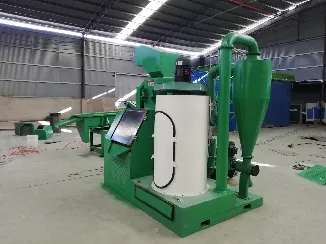

Aug . 14, 2024 08:47 Back to list
How to Dispose of Electronic Devices A Guide to Responsible Recycling
In our increasingly digital world, electronic devices have become an integral part of our daily lives. However, as technology advances, these devices become obsolete more quickly than ever before. Disposing of electronic devices properly is crucial, not only for environmental sustainability but also for the safe handling of potentially harmful materials. Here’s a comprehensive guide on how to dispose of your electronic devices responsibly.
Understanding E-Waste
E-waste, or electronic waste, refers to discarded electrical or electronic devices. This category includes cell phones, computers, laptops, televisions, printers, and more. These products often contain hazardous materials like lead, mercury, and cadmium, which can pose significant health risks if not managed correctly. Therefore, it is vital to avoid simply tossing these items in the trash.
Evaluate Your Devices
Before disposing of your electronics, assess their condition. If a device is still functional, consider donating it to a local charity, school, or community organization. Many organizations welcome working electronics as they help bridge the digital divide for those who cannot afford new devices. You might also consider selling the device online through platforms like eBay or Facebook Marketplace. This not only prolongs the life of the device but also provides you with a little extra cash.
Recycling Options
If your electronic device is no longer usable, recycling is the next best option. Many local governments offer e-waste recycling programs, allowing residents to drop off their unwanted electronics at designated locations. Some retailers also have take-back programs where they accept old gadgets for recycling—often incentivizing consumers with discounts on new purchases.

When participating in these programs, ensure that the recycler is certified and follows ethical recycling practices, such as those outlined by the Responsible Recycling (R2) or e-Stewards programs. These certifications ensure that the e-waste is processed in environmentally safe ways and that data security is upheld.
Data Security
Before disposing of any electronic device, it is essential to protect your personal information. Simply deleting files may not be enough, as data can often be recovered. Instead, consider performing a factory reset or wiping the device using specialized software designed for data destruction. For devices like hard drives that contain sensitive information, physically destroying the drive might be the safest option.
Legislative Considerations
In some regions, there are laws regarding e-waste disposal. Familiarize yourself with your local regulations to ensure compliance. Some areas may impose penalties for improper disposal, particularly for hazardous materials. Take time to educate yourself about any e-waste laws in your community to avoid fines and to understand the proper protocols for disposal.
Conclusion
Properly disposing of electronic devices is a responsibility that manufacturers, consumers, and governments share. By re-evaluating how we manage our old electronics, we can reduce e-waste and contribute to a healthier planet. Whether you choose to donate, recycle, or responsibly dispose of your devices, each action plays a part in fostering a more sustainable future. Remember, every little effort counts in preserving our environment for generations to come.
Latest news
Troubleshooting Common Eddy Separator Problems
NewsJul.04,2025
The Role of Metal Recycling Plants in Circular Economy
NewsJul.04,2025
The Impact of Recycling Line Pickers on Waste Management Costs
NewsJul.04,2025
Safety Features Every Metal Shredder Should Have
NewsJul.04,2025
How Industrial Shredders Improve Waste Management Systems
NewsJul.04,2025
How Cable Granulators Contribute to Sustainable Recycling
NewsJul.04,2025